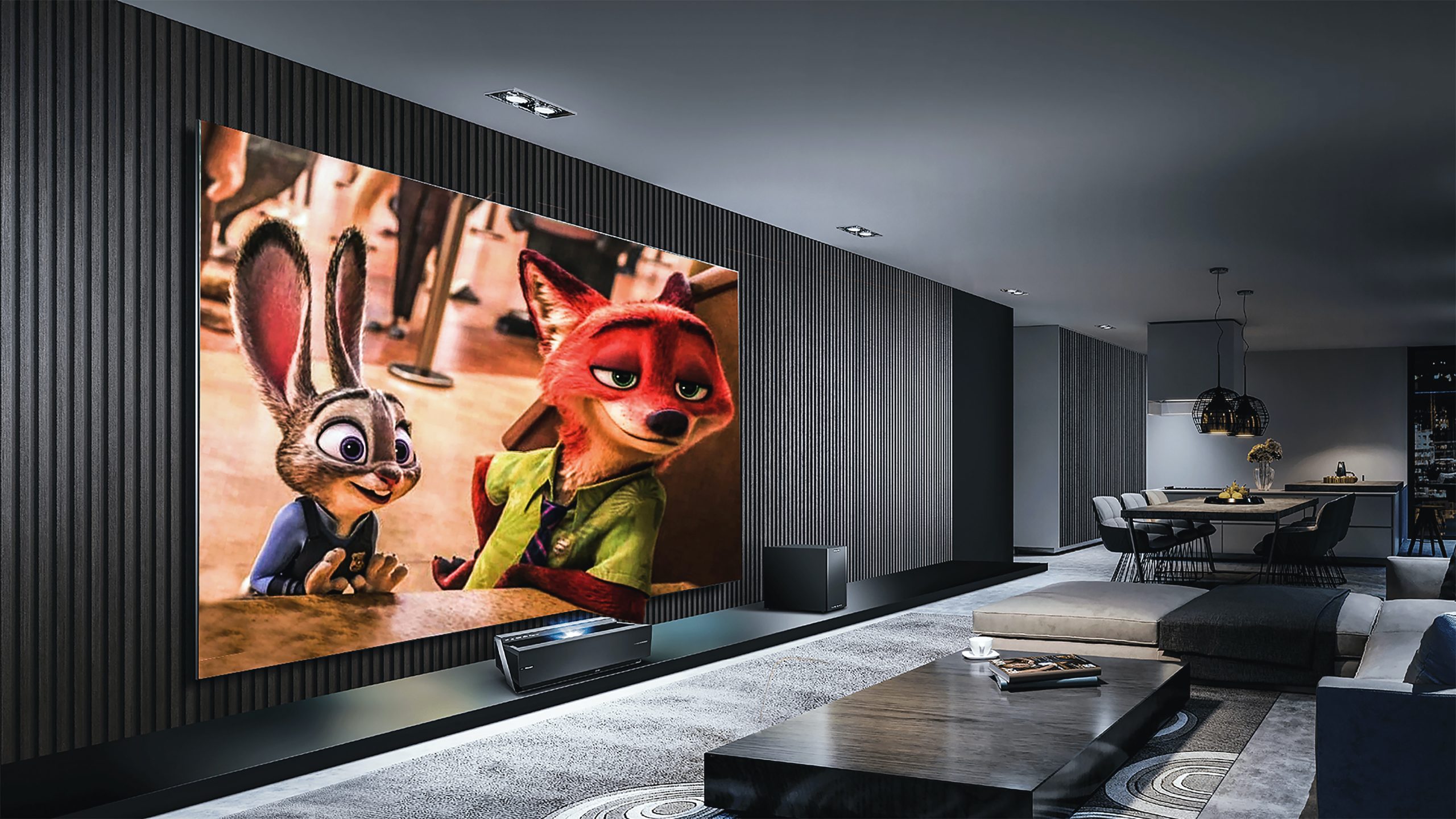In the realm of entertainment, the future is already here. The home media landscape, once dominated by physical formats and linear television, has been revolutionized by the advent of digital technology. Today, the industry is a dynamic and rapidly evolving ecosystem, shaped by groundbreaking technological advancements, shifting consumer behaviors, and the ever-changing cultural zeitgeist.
As we navigate through the digital age, the home media industry is witnessing a paradigm shift. Streaming services, smart TVs, virtual reality (VR), augmented reality (AR), and voice control technologies are not just buzzwords; they are transformative forces leading the charge in redefining how we consume media. These technologies are blurring the lines between the physical and digital worlds, creating immersive, interactive, and personalized experiences that were once the stuff of science fiction.
However, this transformation is not without its challenges. The industry is in a state of flux, grappling with issues of sustainability, data privacy, and the need for continuous innovation. Yet, these challenges also present opportunities for those willing to adapt, innovate, and lead.
This article aims to delve into the heart of this transformation. We will explore the emerging trends that are shaping the future of home media, the challenges that lie ahead, and the opportunities that this new era presents. We will take a closer look at how technologies like streaming services, smart TVs, VR, AR, and voice control are changing the face of home entertainment, and what this means for consumers, businesses, and the industry as a whole.
In this journey through the future of home media, we will draw upon insights from industry leaders, expert analysis, and current research. Our goal is to provide a comprehensive and forward-looking perspective on where the home media industry is headed, offering a roadmap for navigating the exciting terrain that lies ahead. So, let’s embark on this journey into the future of home media, exploring the trends, challenges, and opportunities that are set to redefine the industry.
Home Media Trends
The home media industry is in the midst of a significant transformation, driven by a combination of technological advancements, changing consumer behaviors, and societal shifts. As we delve into the trends shaping this landscape, it becomes clear that we are witnessing a revolution in how we consume and interact with media at home.
Streaming Services
Streaming services have become the cornerstone of home entertainment, fundamentally altering the way we consume media. Platforms like Netflix, Amazon Prime, Disney+, and Hulu have ushered in the era of on-demand content, allowing users to watch their favorite shows and movies at their convenience. This shift has been fueled by the proliferation of high-speed internet and smart devices, making it easier than ever for consumers to access a vast array of content.
Moreover, these platforms are investing heavily in original content, further expanding their libraries and drawing in more subscribers. As they continue to innovate and diversify their offerings, streaming services are poised to remain a dominant force in the home media landscape.
Smart TVs and Connected Devices
The rise of smart TVs and connected devices has significantly enhanced the home viewing experience. These devices, equipped with internet connectivity and a host of applications, offer much more than traditional television viewing. From streaming content directly from apps to browsing the internet, playing games, and even using social media, smart TVs have transformed the television into a multi-functional entertainment hub.
Furthermore, the integration of voice control technologies like Amazon Alexa and Google Home has added another layer of convenience, enabling users to control their devices using voice commands. As these technologies continue to evolve and become more integrated, the adoption of smart TVs and connected devices is set to increase.
Virtual Reality (VR) and Augmented Reality (AR)
Virtual Reality (VR) and Augmented Reality (AR) represent the next frontier in home entertainment. These technologies offer immersive experiences, transporting users into alternative realities. Whether it’s watching a concert in VR or playing an AR game in your living room, these technologies offer a level of engagement that traditional media can’t match.
While still in their early stages, VR and AR have enormous potential. As the technology becomes more affordable and accessible, and as content creators continue to explore new ways to leverage these technologies, VR and AR are set to play a significant role in the future of home media.
Voice Control
Voice control technology is another trend that’s reshaping the home media landscape. Devices like Amazon Echo and Google Home have brought voice control into the mainstream, allowing users to control their media consumption using voice commands. This technology extends beyond playing music or controlling smart TVs; it can also be used to search for content, control smart home devices, and even make online purchases.
As voice recognition technology becomes more sophisticated and integrated with other devices, voice control will become an increasingly common feature in home media systems. This trend represents a move towards more intuitive and seamless user experiences, where our devices understand and respond to our natural language commands.
Home Media Challenges
While the future of home media is undoubtedly exciting, it is not without its challenges. The industry is in a state of flux, grappling with a variety of issues that stem from the very advancements driving its growth.
Rapid Technological Advancements
One of the most significant challenges is the rapid pace of technological advancements. While these advancements are driving the industry forward, they also present a challenge for both companies and consumers. For companies, staying ahead of the curve requires continuous innovation and investment. They must not only keep up with the latest technologies but also anticipate future trends and adapt their strategies accordingly.
For consumers, the rapid pace of change can be overwhelming. With new devices, platforms, and technologies constantly emerging, it can be difficult to keep up. This can lead to a sense of technology fatigue, where consumers feel overwhelmed by the constant need to learn and adapt to new technologies.
Premiumization and Quality Expectations
The shift towards premiumization and the increasing demand for high-quality products and experiences present another challenge. Consumers today expect high-quality content, seamless user experiences, and state-of-the-art devices. Meeting these expectations requires significant investment in content production, technology, and user experience design.
However, the drive for premiumization also raises issues of affordability and accessibility. As companies strive to deliver superior products and experiences, there is a risk that home media could become increasingly expensive, potentially pricing out some consumers.
Sustainability
The issue of sustainability is another significant challenge. As consumers become more environmentally conscious, there is increasing pressure on companies to consider the environmental impact of their products. This includes everything from the materials used in devices to the energy consumption of streaming services.
Addressing these concerns requires a shift towards more sustainable practices, such as using recycled or renewable materials, improving energy efficiency, and promoting device longevity. However, implementing these changes can be complex and costly, presenting a significant challenge for the industry.
Data Privacy and Security
With the rise of connected devices and online streaming services, data privacy and security have become major concerns. Consumers are increasingly aware of the value of their data and the risks associated with data breaches. As a result, companies in the home media industry must ensure that they have robust data protection measures in place.
However, ensuring data privacy and security is a complex task, particularly as the industry becomes more interconnected. Companies must navigate a complex landscape of data protection regulations, while also dealing with the technical challenges of securing data.
Home Media Opportunities
While the challenges facing the home media industry are significant, they also present a wealth of opportunities. By addressing these challenges head-on, companies can differentiate themselves and carve out a unique position in the market.
Innovation in Voice-Activated Products and Smart Home Hubs
The demand for voice-activated products and smart home hubs presents a significant opportunity for innovation. As consumers seek more convenient and intuitive ways to control their home media, companies can develop new products and features that enhance user experience. This could include more sophisticated voice recognition capabilities, integration with a wider range of devices, or new functionalities that leverage the power of AI and machine learning.
Growth of VR and AR Technologies
The growth of VR and AR technologies presents a significant opportunity for companies to create immersive and engaging content. These technologies offer a level of interactivity and immersion that traditional media cannot match, providing a unique platform for storytelling and entertainment. As the technology becomes more accessible, there is significant potential for growth in this area.
Demand for Larger Screens and Premium Features
The increasing demand for larger screens and more premium features presents an opportunity for companies to cater to consumers’ evolving preferences. As consumers seek more immersive and high-quality viewing experiences, companies can develop new products and technologies that meet these demands. This could include larger and higher-resolution screens, superior home sound system quality, or innovative features that enhance the viewing experience.
Focus on Sustainability
The focus on sustainability presents an opportunity for companies to differentiate themselves by making their products more environmentally friendly. This could involve improving the repairability of devices, selling refurbished devices, or improving sustainability credentials through packaging and communications. By demonstrating a commitment to sustainability, companies can appeal to environmentally conscious consumers and enhance their brand image.
Data Security
With increasing concerns about data privacy and security, there is an opportunity for companies to differentiate themselves by offering robust data protection measures. This could include end-to-end encryption, transparent data practices, or advanced security features. By prioritizing data security, companies can build trust with consumers and gain a competitive advantage.
Shaping the Future of Home Media: Embracing Change and Opportunity
As we stand on the cusp of a new era in home media, it’s clear that the future is both exciting and full of potential. The rapid pace of technological innovation, coupled with changing consumer behaviors and societal shifts, is reshaping the home media landscape in ways we could only imagine a few years ago.
Streaming services, smart TVs, VR and AR technologies, and voice control are not just trends; they are transformative forces that are redefining how we consume and interact with media at home. They are blurring the lines between the physical and digital worlds, creating immersive, interactive, and personalized experiences that were once the stuff of science fiction.
However, this transformation is not without its challenges. The industry must navigate issues of rapid technological change, premiumization, sustainability, and data privacy. These challenges are complex and multifaceted, requiring a proactive and forward-thinking approach.
Yet, within these challenges lie significant opportunities. The demand for innovative products, immersive experiences, and sustainable practices presents a wealth of opportunities for those willing to innovate and lead. By embracing these opportunities, companies can not only navigate the challenges they face but also shape the future of the home media industry.
As we look to the future, one thing is clear: the home media industry is a dynamic and evolving landscape, full of potential. As technology continues to evolve, so too will the ways in which we consume media at home. By staying ahead of trends, embracing innovation, and addressing the challenges head-on, companies in the home media industry can seize the opportunities that lie ahead and shape the future of home entertainment.
In this exciting journey, the only constant is change. But with change comes opportunity. And for those willing to embrace it, the future of home media holds immense promise. So, as we stand on the brink of this new era, let’s embrace the change, seize the opportunities, and shape the future of home media together.





